George M. wrote: How do you sharpen a single bevel broadhead, or convert a two-sided head into a single bevel?
It is practically impossible to remake a two-sided broadhead into a satisfactory single bevel head. It is also more difficult to sharpen a single bevel broadhead that does not have a factory-machined edge.
Some archers get a single bevel head reasonably sharp with a file, but they are few and far between. Most folks can’t keep the file at a consistent angle, and that is the key to getting the edge sharp.
Most popular single bevel broadheads come ground with a preset bevel, commonly about 25 degrees. Broadheads that are factory-beveled may be sharpened with a commercial sharpener designed for that specific task. There are several good sharpeners on the market with the capability of sharpening both knives and broadheads, and some are specifically made just for broadheads. All of them will accomplish the ultimate goal, however; the level of sharpness depends on the person’s ability and experience using these helpful tools.
A factory-beveled broadhead may also be sharpened with a natural sharpening stone, diamond stone, or multiple grades of “wet or dry” sandpaper mounted on a hard flat surface. Most stones or sandpaper of medium to fine grit will do the job. The finer grit will result in a slicker finish and sharper edge.
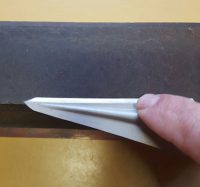
The secret to sharpening a single bevel head is to follow the factory bevel; otherwise you will be creating a new bevel, which will result in unnecessary metal removal and a lot of futile effort. The method I will describe is best accomplished with the broadhead mounted on an arrow.
To ensure that you are following the factory bevel, place the broadhead face down with the beveled edge flat against the sharpening surface.
Hold onto the arrow shaft and place your finger or thumb on the broadhead with just enough pressure to keep the beveled edge flat during the sharpening process. The other hand is free to hold the stone or sandpaper.
Moving the broadhead in a circular motion, rather than back and forth, makes it easier to keep the bevel flat on the sharpening surface.
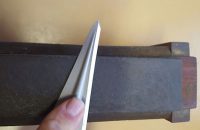 When the desired sharpness is attained, turn the broadhead over and place the backside flat on the edge of the sharpening surface. Move the broadhead back and forth, not circular, to remove the metal burr that remains on the edge. The number of motions required in both of these steps depends on the condition of the blade. Sharpening the backside will probably require just a few strokes.
When the desired sharpness is attained, turn the broadhead over and place the backside flat on the edge of the sharpening surface. Move the broadhead back and forth, not circular, to remove the metal burr that remains on the edge. The number of motions required in both of these steps depends on the condition of the blade. Sharpening the backside will probably require just a few strokes.
No matter which method is used to sharpen the broadhead, stropping should always be the final step to polish the edge to bring it to the ultimate sharpness. Stropping is not complicated; a scrap piece of leather mounted on a board or placed on a flat surface will work. A piece of smooth cardboard will also accomplish the desired effect. The most important thing to remember, as with the sharpening step, is to keep the sharpened edge flat on the strop. Drag the broadhead across the strop, away from the cutting edge. Pick the broadhead up at the end of each stroke so as not to round the cutting edge. When restarting the stroke, make sure the edge is again placed flat against the strop. Both sides of the broadhead cutting edge can be stropped.
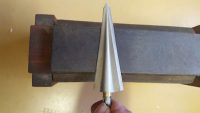 To test for sharpness, place the broadhead at an angle and lightly drag the edge across your thumbnail. It should cut into the nail or snag. If it skips across the nail, the edge needs more work!
To test for sharpness, place the broadhead at an angle and lightly drag the edge across your thumbnail. It should cut into the nail or snag. If it skips across the nail, the edge needs more work!
Editor’s Note: Joe Furlong is the original manufacturer of Tuffhead single bevel broadheads, and now is happy to help the new owner, Jason (Wojo) Wojciechowicz.


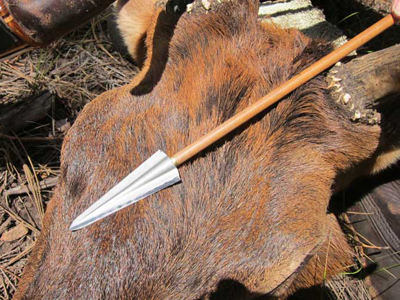
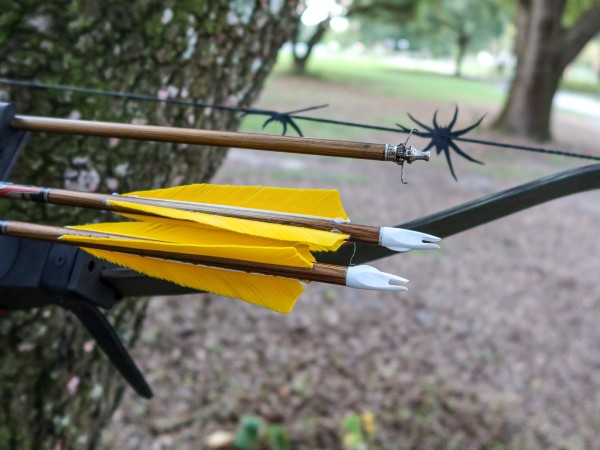


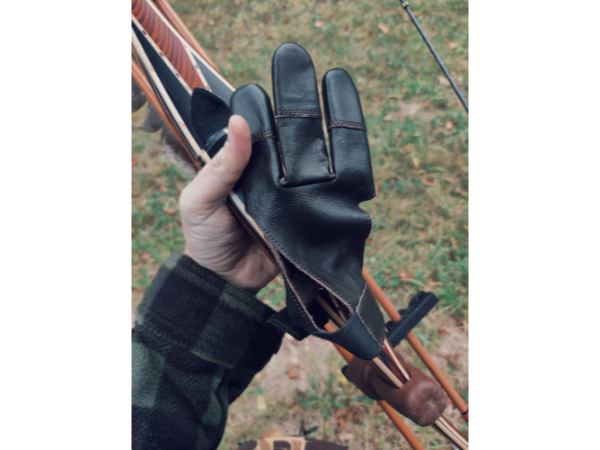
What is the advantage of a single bevel rather than the old style? Is this just another case of a “latest and greatest” kind of hype?
Hi Len,
Single bevel broadheads have been around for well over 30 years. Here is a link to an article we published some years ago by Dr. Ed Ashby and it explains how the single bevel broadhead works. Why Single Bevel Broadheads? Obviously, if what you are using works for you, stick with it.
I am using left wing hélico left fletching + left bevel broad heads.
I think it is the best choice for a right hand bowman to break heavy bones.
My best regards
Paul
Over the years I keep reading about this 25° factory bevel. I have used both Lansky and KME guided sharpening jigs, I always seem to find that I wind up set much closer to 30° to match the factory bevel. The biggest problem I run into is trouble finding a way to get the angle correct without grinding a flat spot on the ferrul with the sharpener. That said, following the factory bevel and running through the KME factory diamond plates from coarse to extra fine (depending on how much sharpening is needed to determine how coarse to start) then continuing with 800, 1,000, and 1,500 grit paper wrapped around the plate, I get my Grizzly single bevel head so sharp that there is no drag or pull when shaving hair off my arm. This also polishes the bevel mirror bright which seems to help resist corrosion in wet weather and environments.
According to every sharpening manual I have ever read or watched, the key to sharpening is to get a burr on the opposite side you are sharpening. Once you have the burr complete from the point to heal, then you can flip it over and remove the burr. If you fail to get a burr, you will never attain the sharpest edge possible unless you do this. If some guys are having trouble, this could be another reason they aren’t accomplishing that hair popping edge!
Thank,
Roger M